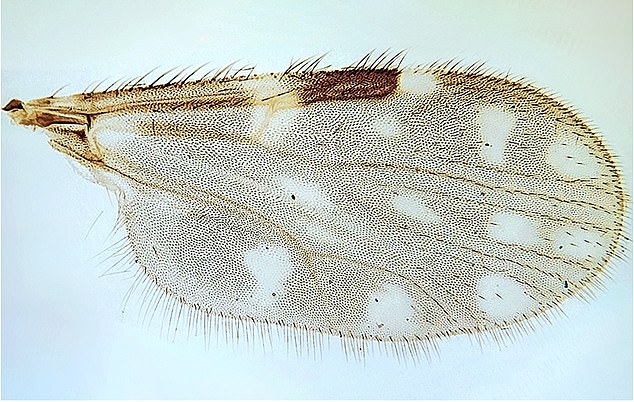Sloth fever virus: Joint pain, severe headaches, sore eyes and numb arms… doctors reveal terrifying symptoms in victims – and how it could spread to the UK
It starts as a fever, similar to a bad cold or flu. Within a day or two, a headache develops, along with aching pains in the hands and feet.
Within 24 hours you will notice the pain spreading to your arm, which will then quickly become numb.
This is the worrying range of symptoms experienced by victims of the debilitating ‘sloth fever’ virus, which has been reported in 19 people in Europe over the past two months, the European Centre for Disease Control (ECDC) said.
Experts have raised alarm over the potentially deadly disease, which originated in sloths, warning its spread could become “unstoppable” due to the lack of vaccines.
MailOnline can now reveal three worrying cases of the infection, which is spread through insect bites, in three Italian patients, as documented by the doctors who treated them.
There is no vaccine for the disease, which originated in white-throated sloths, non-human primates and birds
So far, five cases have been reported in Italy, two in Germany and twelve in Spain.
Outside Europe, 8,000 cases have been recorded worldwide since January, mainly in South and Central America, where the virus is more common.
Experts say the virus is unlikely to spread in countries with cooler climates, such as Britain, but it could pose a problem for people travelling abroad.
‘Climate change has even seen infected insects found in the south of France, where many Britons go on holiday,’ said Dr Danny Altmann, professor of immunology at Imperial College.
‘It’s very simple: people go abroad, pick up the virus and bring it back with them.
“The virus is concerning for people living in the US because infected mosquitoes have now reached the San Francisco area and could spread further.”
The first European case was described by doctors at the Sacro Cuore Hospital in Calabria, southern Italy.
The patient, a 45-year-old man, had recently traveled to the tropical Caribbean, close to the South American countries where most cases have been identified.

The pattern of spots on the insect’s wings is a characteristic feature of mosquitoes and midges that carry the ‘sloth virus’. Photo: Ceratopogonidae Collection of IOC/Fiocruzi
These include Brazil, Bolivia, Peru, Colombia and Cuba.
The man suffered from flu-like symptoms, including high fever, headache, muscle and joint pain, the Italian doctors said reported.
After conducting further tests to rule out underlying conditions, doctors tested for the “sloth virus,” medically known as Oropouche, using specialized blood tests.
The patient is under close medical supervision, but his condition is ‘stable’.
Another case involved a “traveler” in his mid-twenties who recently returned from a two-week trip to Cuba. The doctors did not specify the patient’s gender.
During the return flight to Italy, the patient developed a high fever and suffered from ‘severe headache, nausea and diarrhea’.
The next day the patient experienced severe pain behind the eyes and severe stiffness in the joints.
The patient was tested for other similar viruses, including Dengue and Zika, with negative results. Blood tests for Oropouche were positive and the patient is currently being monitored.
A third patient, in his mid-fifties, suffered from high blood pressure, asthma and obesity and traveled to Cuba in May.
Two days after his return in early June, the patient developed fever, pain behind the eyes and nausea.
Within three days, the symptoms had become so severe that they went to the emergency room at the hospital in Forlì in the northern Italian region of Emilia-Romagna.
When the doctors examined the patient, they noticed that the left arm was slightly numb and round, red spots appeared on the surface of the skin.
After tests for other viruses returned negative results, blood samples tested positive for Oropouche.
The doctors found that there was no damage to the internal organs and that all symptoms, except for numbness in the arm, had disappeared within two weeks.
The medics noted that the virus has an incubation period of three to 10 days, after which symptoms appear. They added that the fever is typically “acute” for two to four days before disappearing and then reappearing seven to 10 days later.
In severe cases, the disease can lead to meningitis, according to the NHS Travax website.
Although the disease can be fatal, the ECDC says fatal outcomes are extremely rare and recovery from the disease typically occurs within a week.
According to a report in The Lancet, two deaths from Oropouche were reported in Brazil for the first time on July 25. They involved two young women who had no other underlying health conditions.
The European authority advises travellers to affected areas, such as Brazil, Cuba, Peru and Colombia, to wear insect repellent and long-sleeved shirts and trousers to reduce the risk of bites.
The strain responsible for the recent outbreak was first detected in the small village of Oropouche, Trinidad and Tobago, in 1955.
Five years later, during the construction of the highway between Belem and Brasilia, a sloth was found carrying Oropouche.
Within a year, people in the area became sick with the virus and since then there have been about 30 outbreaks, all concentrated in the Amazon.
The virus spreads in the jungle through sloths, birds and primates via infected mosquitoes and midges.
These insects are thought to occur in urban areas and can infect humans there as well.
The increase in human cases is thought to be due to a number of factors, including deforestation, which drives out animals such as sloths, and rising temperatures, which cause mosquitoes to fly further and further away.
